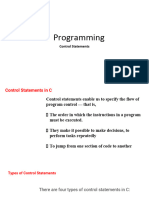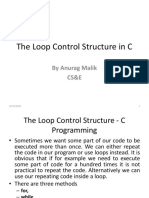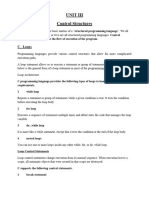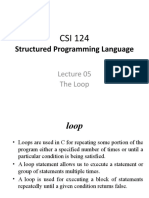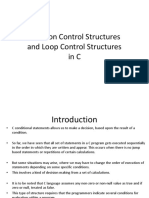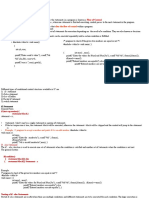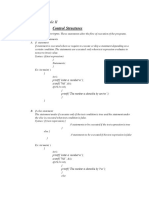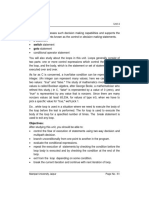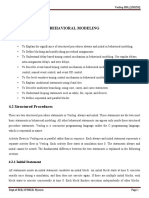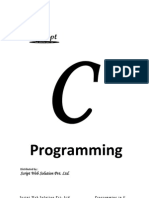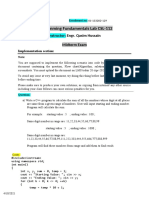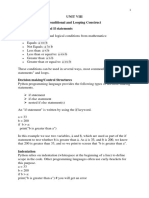0% found this document useful (0 votes)
16 views27 pagesCPNM Lecture 4 - C Control Structures
The document provides an overview of C control structures, categorizing them into selection, iteration, and jump statements. It explains various control statements such as if, while, do, for, switch, and their usage with examples. Additionally, it covers the break and continue statements, the goto statement, and the null statement, along with some extensions available in GNU C.
Uploaded by
roleri2503Copyright
© © All Rights Reserved
We take content rights seriously. If you suspect this is your content, claim it here.
Available Formats
Download as PDF, TXT or read online on Scribd
0% found this document useful (0 votes)
16 views27 pagesCPNM Lecture 4 - C Control Structures
The document provides an overview of C control structures, categorizing them into selection, iteration, and jump statements. It explains various control statements such as if, while, do, for, switch, and their usage with examples. Additionally, it covers the break and continue statements, the goto statement, and the null statement, along with some extensions available in GNU C.
Uploaded by
roleri2503Copyright
© © All Rights Reserved
We take content rights seriously. If you suspect this is your content, claim it here.
Available Formats
Download as PDF, TXT or read online on Scribd
/ 27
